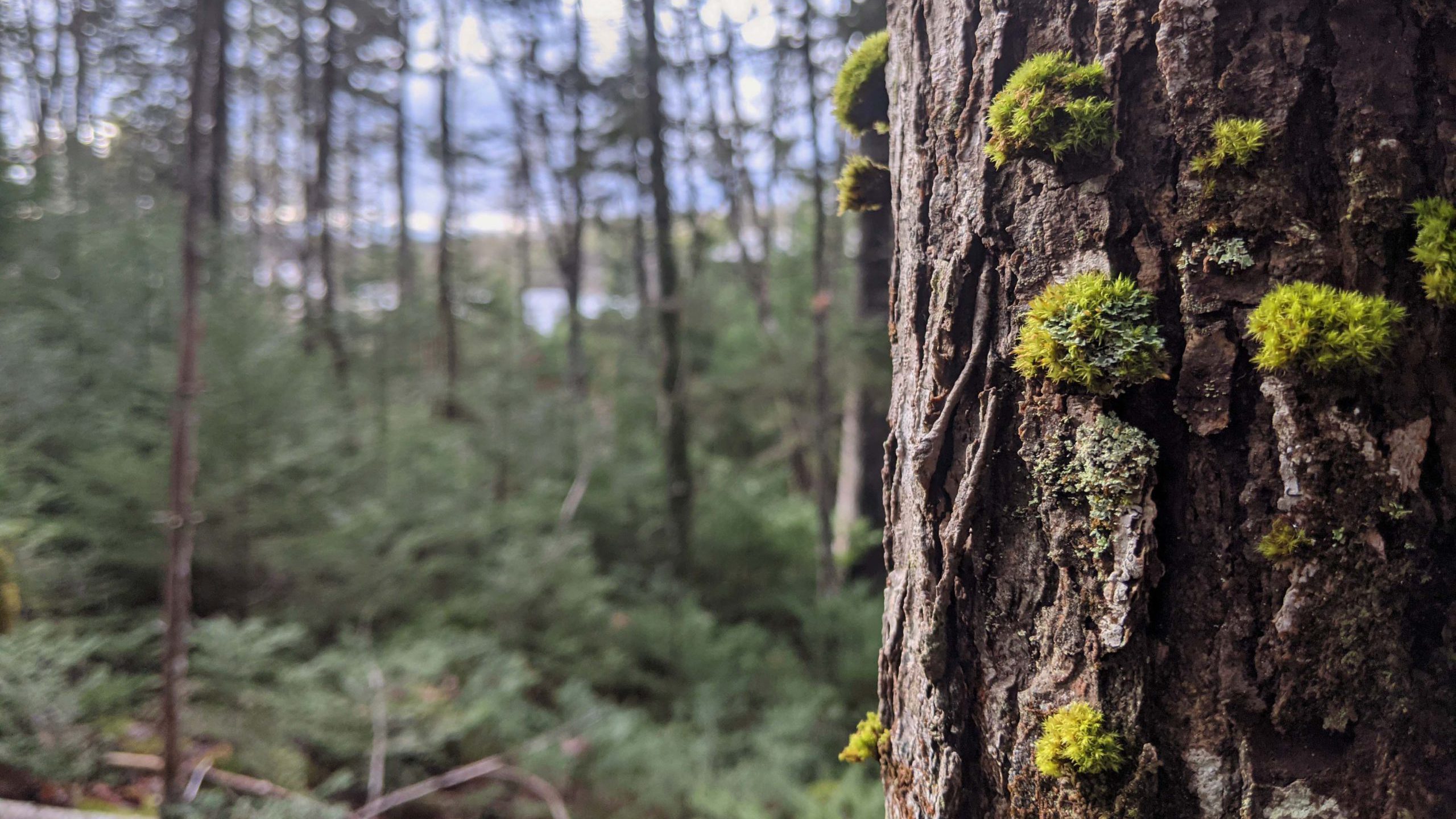Paces Lake, like Owls Head, in provincial park limbo

caption
A moss covered tree stands in a forest to the northeast of Paces Lake. The park area is not accessible by public road or trail.Both Nova Scotia parks have been awaiting official designation for decades
For over 40 years, the forest south of Paces Lake has been awaiting designation as a provincial park.
The nearly 400 hectares of wetland and forest near Musquodoboit Harbour was expropriated by the province in 1978, according to property documents, “for a public purpose, namely the purpose of establishing a recreational area for the public in general.”
Not far from Paces Lake, the area of Owls Head Provincial Park was identified for protection in the 1975 Eastern Shore Seaside Parks System. In 2019, it was delisted from its pending protection status, and a developer proposed building a golf resort in the area. The issue spurred public uproar, a court challenge, and became a major issue in August’s provincial election.
Last week, the developer backed down from the project, but the park still has not been officially designated.
She said there needs to be more transparency and accountability from the government when it comes to protected areas.
“People would be really surprised I think because these areas are often called provincial parks, nature reserves, wilderness areas, but they’re not actually protected under the law, they’re only parks in name,” Lee said.
Lee said she applauds the new Progressive Conservative government’s commitment to looking at the issue of conservation, but she wants them to “take concrete action.”
She encourages the provincial government to “finally just do this last step in the process that they need so that they’re no longer at risk.”
The province released the Parks and Protected Areas Plan in 2013 which identified pending and new properties for conservation. Despite being named on the list, Paces Lake Provincial Park was not officially designated.
Then, in April 2021, the Liberal government announced 61 properties for official designation. Paces Lake Provincial Park was named on that list as “intended for protection” but was never legally designated.
Chris Miller, the executive director of the Canadian Parks and Wilderness Society’s Nova Scotia chapter, said many areas identified and proposed as provincial parks decades ago have still not been designated.
“We saw that with Owls Head very clearly that unless it actually has legal protection in place, there’s always this temptation by governments to delist it or to treat it as if it’s not a protected area, even if it’s being managed as a protected area.”
In its election platform, the current PC government said there were around 125 properties left on the Parks and Protected Areas Plan’s list that still hadn’t been designated. Miller says this number is closer to 200 if you take into account the properties that the previous government said it would designate but did not.
The practice of managing provincial parks without designating them was the status quo for many years, Miller said. He added that conservation has been chronically underfunded in Nova Scotia.
“These sorts of things are just not the biggest priority of government for a long time, and so really important places were falling through the cracks,” Miller said.
In order for a protected area to be legally designated, the executive council of Nova Scotia must pass an order-in-council.
Graham Steele, a former Nova Scotia cabinet minister, has written multiple books on the inner workings of government.
In an interview about the process, Steele said the executive council, sometimes called the cabinet, doesn’t tend to debate the items on its agenda.
“By the time the premier has decided it’s a go, the chances of cabinet rejecting it are pretty close to zero,” Steele said.
The premier decides what goes on the executive council’s agenda, Steele said. After paperwork is done and consultations between the department and the premier take place, the item can be added to the agenda.
“The important thing is all of those discussions happen behind closed doors,” Steele said. “Very few people know who’s talking to who and what they’re saying.”
There is no set rule for how long this process can take, but if a minister pushes for something to get done or if the premier considers something urgent, an order-in-council can happen “in a matter of days,” Steele said.
The Signal requested a comment from the premier but was directed to the Department of Natural Resources and Renewables.
Brian Taylor, a department spokesperson, said in an email that Paces Lake Provincial Park is on the agenda for designation, and the department wants to move forward “as quickly as possible” on conserving the remaining sites in the Parks and Protected Areas Plan.
“This work is being done with the Department of Environment & Climate Change to identify next sites and complete the necessary consultations, legal review, and surveying required to move them along to the final stage of designation by Executive Council,” Taylor said.
“Some areas are further along in this process than others, and we will move through the list in a coordinated way to achieve our mandate.”
About the author
Victoria Welland
Victoria is a journalist with The Signal at the University of King's College. She is also a member of the news team at CKDU 88.1 FM. Originally...
